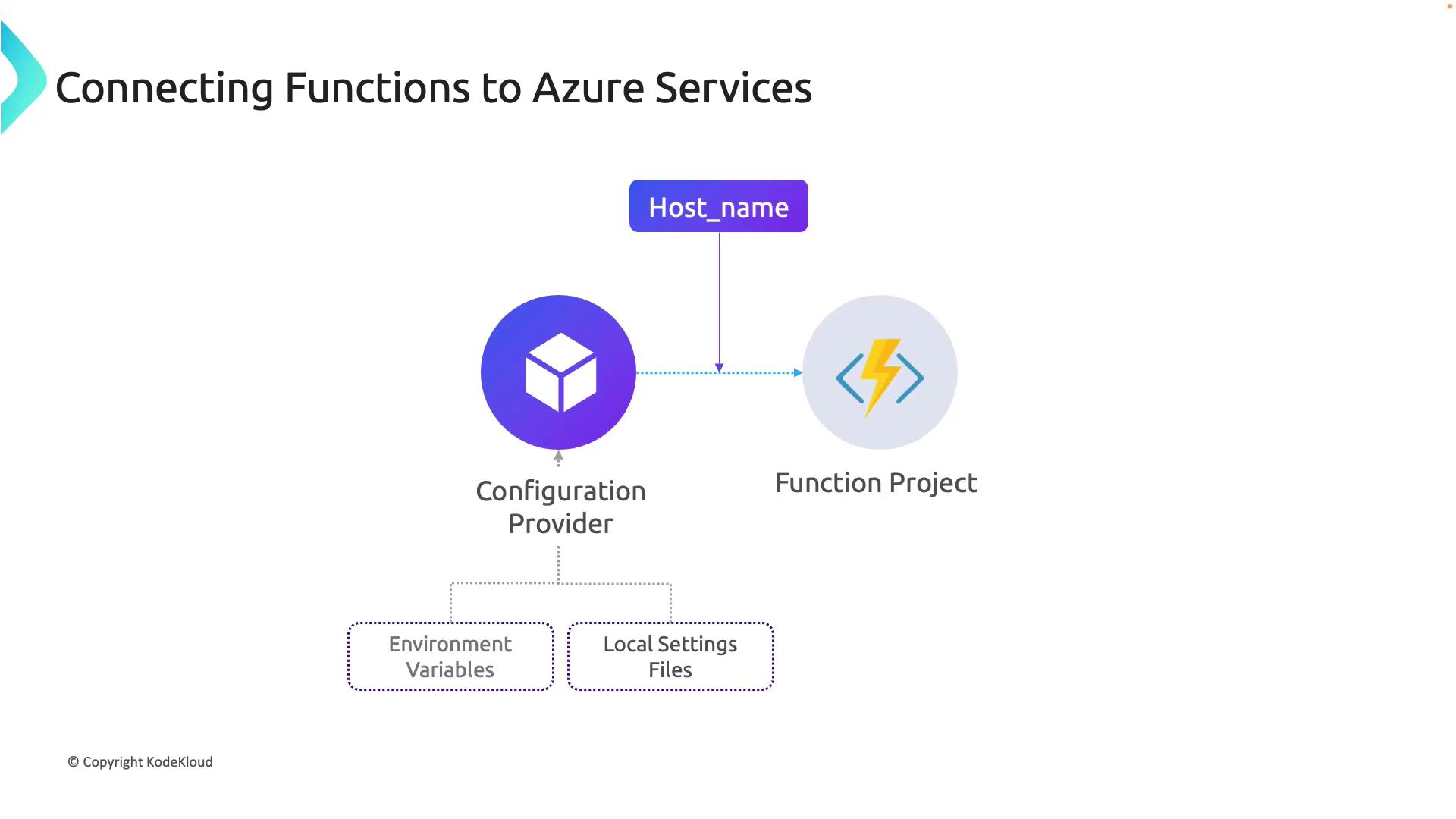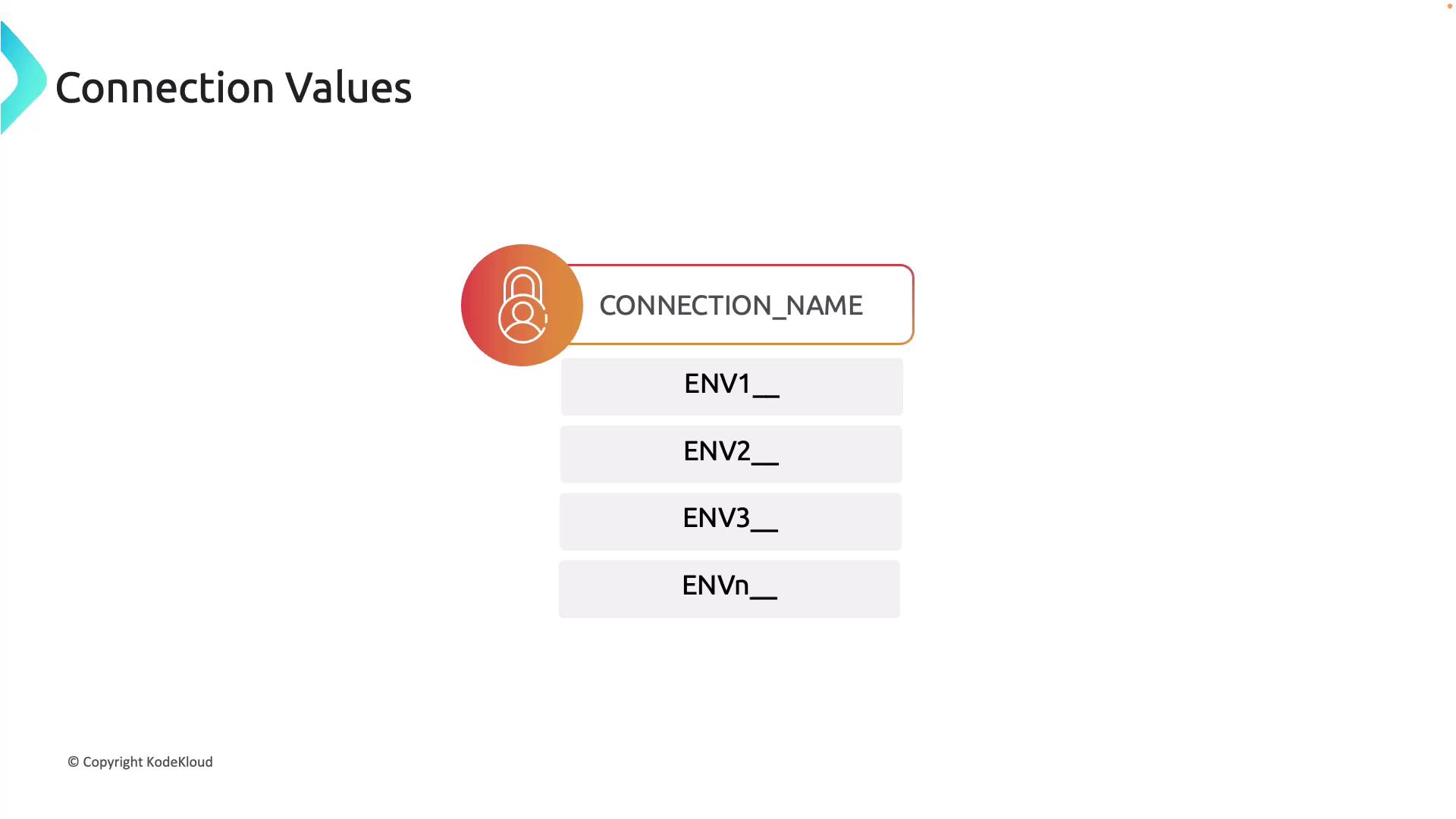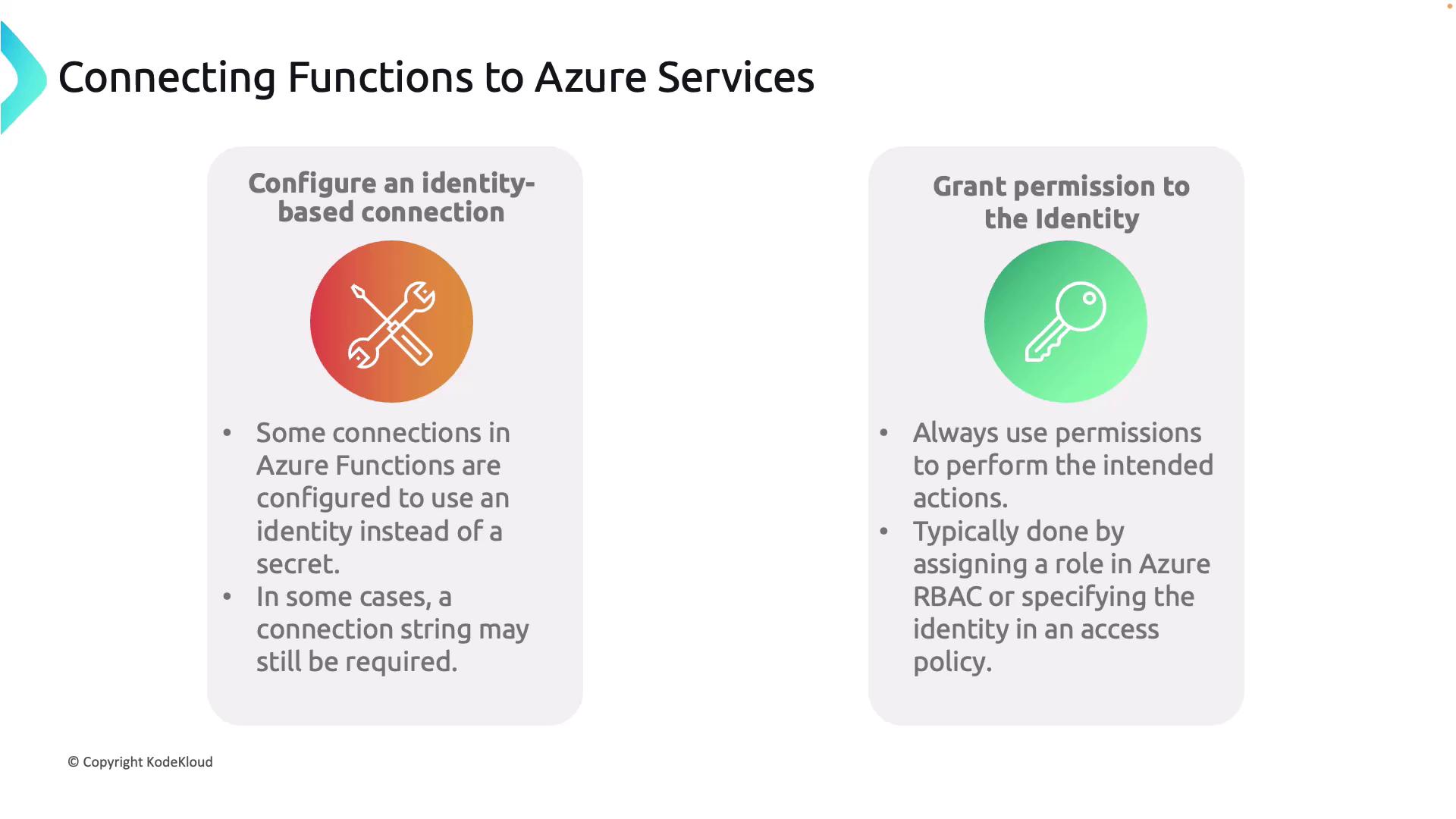AZ-204: Developing Solutions for Microsoft Azure
Developing Azure Functions
Connecting to Azure Services
This lesson explains how Azure Functions connect to other Azure services, focusing on configuration and connection management. By leveraging configuration providers, Azure Functions avoid hard-coding connection strings or details, making it easier to manage configuration changes across different environments such as development, staging, and production.
In Azure Functions, configuration details are abstracted away from the source code, allowing you to update connection information without changing the code itself. The default configuration provider uses environment variables, which, in the Azure environment, are set via application settings.

During local development, settings are typically read from a local settings.json file. This design ensures that the function accesses the proper configuration based on its runtime environment. For example, in a previous demonstration, the connection string was copied from the Azure Portal and pasted into local settings.json. The code was structured to dynamically retrieve the connection string from the configuration file rather than embedding it within the source code.
When the connection name corresponds to a single value, Azure Functions treats it as a connection string. This string often includes sensitive information such as a secret, password, or API key, which is essential for secure communication with other Azure services.
In more complex scenarios, you might manage multiple related environment variables as a logical group. By using a shared prefix that ends with a double underscore (__), these settings are organized into a collection for better management.

This section further explores how Azure Functions connect to other Azure services, with an emphasis on identity-based connections and permission management.
Using Identity Instead of a Secret
Azure Functions can be configured to use an identity, such as Managed Identities, instead of traditional secrets like connection strings. With a managed identity, you assign an identity to your resource that it uses to authenticate and access other Azure resources securely. This approach reduces the risk of exposing sensitive information in your code or configuration files.
Tip
Before integrating identity-based connections, ensure that the service or binding supports this authentication method by reviewing its documentation.
Keep in mind that not all services or bindings support identity-based authentication natively. If a target service lacks this support or requires additional details available only through a connection string, you should provide the connection string in your configuration securely. In such cases, store connection strings in secure locations like Azure Key Vault and reference them securely.
Granting Permissions to the Identity
When using Managed Identities or other forms of identity, it is crucial to grant the appropriate permissions on the target service. For instance, if your Azure Function needs to read from a storage account, the associated identity must have the Azure Blob Data Reader role assigned via Azure Role-Based Access Control (RBAC).
Typically, permissions are assigned by specifying the scope—such as a resource group, subscription, or a specific resource—and by choosing the role that provides the necessary access.

In some cases, you may also need to include the identity in an access policy (for example, in Azure Key Vault) to ensure it can access the required resources. Always adhere to the principle of least privilege—for example, if only reading blob data is required, assign just the Blob Data Reader role instead of more permissive roles like Data Owner or Contributor.
Security Warning
Always follow best practices for access management and avoid using overly permissive roles for your identities.
Understanding how to configure identity-based connections and correctly assigning permissions is critical to maintaining a secure and functional Azure environment. This approach is especially important when building scalable and secure serverless applications with Azure Functions.
With this, our discussion on connecting Azure Functions to Azure services is complete. For more detailed guidance, consider reviewing the Azure Functions documentation.
Watch Video
Watch video content